IAC News
IAC News No.49, November 2016
Japan Society of Civil Engineers International Activities Center November 1, 2016 IAC News No.49
A Report on JSCE Global Vision Seminar
“Global Strategy for Construction Industry” Series No. 3
JSCE Global Vision Seminar Seriese No. 3 was held on October the 3rd, hosted by the Construction Management Committee and the International Activities Center (IAC). The author of this report was transferred to the Japan Society of Civil Engineers (JSCE) and engaged in the planning of the Lecture as the secretariat until the end of September, hence writing this report. The Lecture was a huge success, attended by 207 paid registrants.
The Global Vision Seminar was proposed as part of the 100th anniversary of JSCE, and the first Seminar was held last February with the President of the FIDIC and the second one in April this year with the Vice President of AECOM Asia. The members of JSCE hardly have an opportunity to listen to a talk directly by someone with an international reputation, and the Seminar offers such a rare opportunity with the help of JSCE.
This time, the Lecture focused on concession projects - they are widely implemented overseas but there are only a few cases in Japan - and talks were presented by the guest experts to discuss what the role of a civil engineer is, and how to form a project, address risks and get involved in the project.
Mr. Kevin Tynes, the Chairman of Nippon Koei Latin America-Caribbean Co., Ltd., delivered a lecture with the title of “Concession Projects in Latin America” and talked about the mechanism of a concession project and the roles of those involved. Dr. Sang Hoon Kim, the former Vice President of Daewood Engineering & Construction, Co., Ltd. and the Director of Port Development Division, the Ministry of Oceans and Fisheries, Korea, delivered a lecture with the title of “'Korean Activities and Requirements for EPC Contractor in Concession Projects”', and talked about the matters necessary for undertaking a concession project and risk management. Mr. Kentaro Tsuboi, a Senior Legal Consultant of Freshfields Bruckhaus Deringer LLP, presented a talk about risk distribution and management by using highway construction projects in the US as examples.
Following the lectures by the aforementioned guest speakers, Professor Kazumasa Ozawa from the University of Tokyo, Mr. Masaaki Amma, Managing Director of the Japan Bank for International Cooperation (JBIC), and Mr. Setsuo Hirai, Senior Director of Overseas Projects Division, Ministry of Land, Infrastructure, Transport and Tourism (MLIT) were welcomed to sit on the discussion panel, chaired by Mr. Katsuji Fukumoto, Managing Executive Officer of Obayashi Corporation, to discuss about what the Japanese construction industry should do to take part in concession projects.
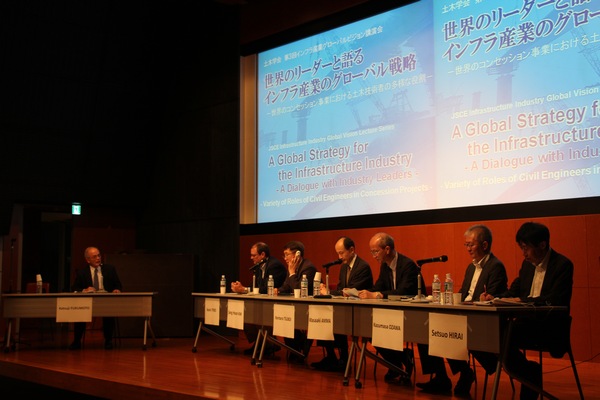
The situation of panel discussion
【Reported by Yoshihiro Katsuhama (Technology Headquarters, Nippon Koei Co., Ltd.)】
Pahang - Selangor Raw Water Transfer Tunnel
-The longest Raw Water Transfer Tunnel-
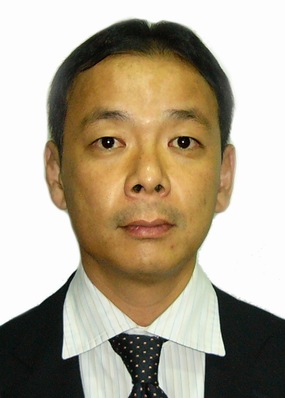
Mr. Takayuki Matsumoto
Shimizu Corporation, International Division, General Manager of Malaysia Office
This project was financed by Japan International Cooperation Agency (JICA). We constructed a water tunnel with a diameter of 5.3m, to convey water from Pahang State to Kuala Lumpur and Selangor State through Titiwangsa Mountain Range to water 1.89 million m3 per day for daily lives and industrial use.
The tunnel is the longest tunnel in South – East Asia. The maximum overburden of tunnel is 1,246m, which is the 8th biggest in the world. The tunnel of this kind is rare in the world. The geology of that area consists of granite whose maxim compressive strength is over 200MPa.
The tunnel was divided into NATM sections (4 Sections, the total length: 9.1km) and TBM sections (3 Sections, the total length: 34.6km). The construction period was 5 years, and high-speed tunneling was required in both NATM section (130m/month) and TBM section (450m/month).
During the construction of the NATM section, we mobilized the most advanced excavation equipment to fit to the tunnel which diameter was 5.2m, and achieved the maximum monthly excavation record of 283m, which exceeded the one achieved in Japan.
During the construction of TBM section, we mobilized a tunnel boring machine which had strong thrust forces (10% more the regular machine) to excavate hard rock. In poor geological sections, the early installation of tunnel support system directly behind the cutterhead was proved as effective.
In the TBM-1 section, we encountered the heavy water ingress that reached to 24.6m3/min in maximum, that was more than we anticipated. We reinforced dewatering systems and successfully avoided the flooding of the tunnel boring machine. In the TBM-2 section, we encountered hot rock mass whose temperature was 50 degrees Celsius, and length was approximately 5km. We installed additional ventilation systems and chillers, and then completed the excavation.
We presented our experience of long distance tunneling at the World Tunnel Congress, Japan Society of Civil Engineers, and the Institute of Engineers in Malaysia. Our achievement was recognized with the JSCE Outstanding Civil Engineering Achievement Award and the Merit Award of Engineering Advancement Association of Japan for contribution to the further development of tunnel construction techniques.
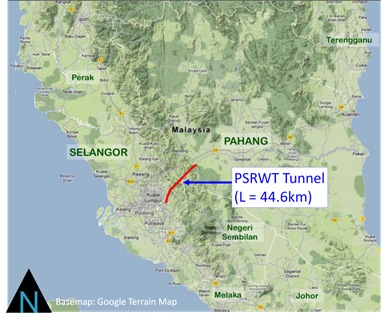
Fig.1 Tunnel Location (Pahang State and Selangor State, Malaysia)
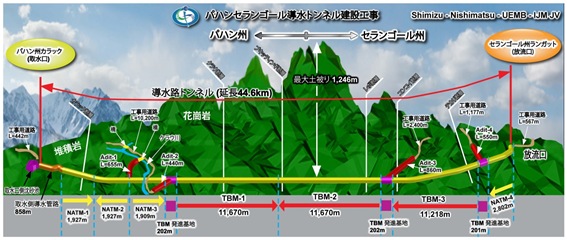
Fig.2 Section of Raw Water Transfer Tunnel
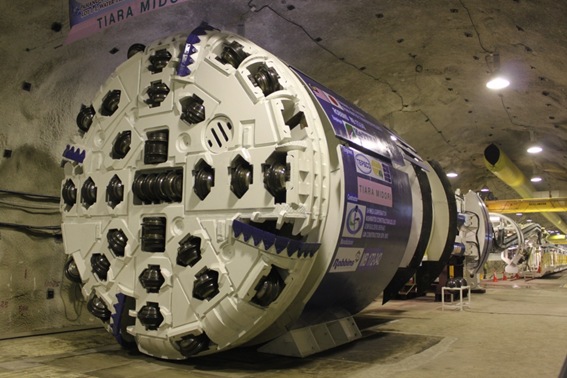
Fig.3 Tunnel Boring Machine (TBM)
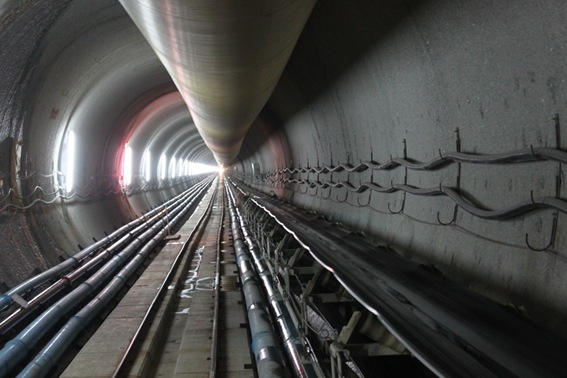
Fig.4 General View of TBM section
JSCE Annual Meeting International Program for
Young Engineers and International Students
The 18th International Summer Symposium (The 18th ISS), International Workshop for Young Civil Engineers, and a technical tour were held as part of the JSCE Annual Meeting International Program on Tohoku University Kawauchi-Kita Campus and Sendai International Center from 7th to 8th September. These events gave international students and young engineers a good opportunity of cross-border communication.
The 18th ISS was held in the mornings of 7th and 8th. The ISS has been held in the JSCE Annual Meeting since 2008. The participants of JSCE Study Tour Grant program supported by the JSCE International Scientific Exchange Fund also attend the ISS. A total of 60 participants made presentations on their researches in 8 sessions this year. They engaged actively in discussions and exchanged ideas and views with each other.
The Workshop was held in the afternoon of 8th. The topic of the workshop was "The Miracle of Kamaishi ^The Solution that Achieved the Miracle". About 20 participants studied about the approaches and projects taken in order to reduce and mitigate disaster risks and impact. Many ideas about future disaster countermeasures were proposed and discussed actively. Mutual understanding was enhanced among the participants as a result.
As the last event in the Int’l Program, a technical tour was carried out for the international students in the afternoon of the 2nd day. Participants visited Sendai International Airport that has been reconstructed after the Great East Japan Earthquake, Tohoku University International Research Institute of Disaster Science (IRIDeS), Tsunami Tower Shelter, and Millennium Hope Hills. The participants learned and experienced natural disasters and disaster prevention and mitigation measures at first-hand in those two days.
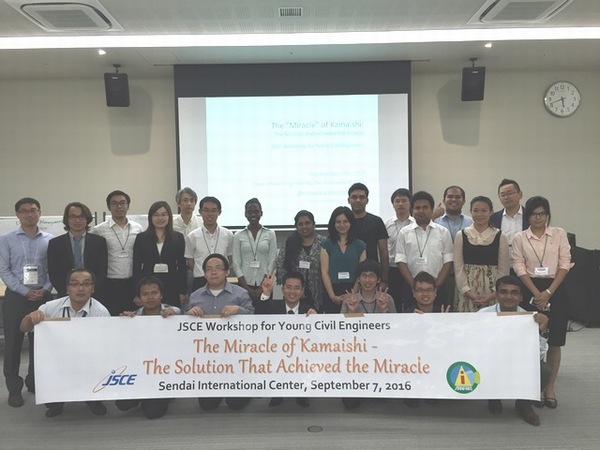
Participants in JSCE Workshop for Young Engineers
【Reported by Masato Saito (Saitama University), IAC International Student Group Leader】
Updates
- The summary of feature articles in the November 2016 issue of the JSCE Magazine is available on the JSCE website.
http://www.jsce-int.org/pub/magazine - Five projects introduced in the booklet “TRANSFER OF CIVIL ENGINEERING TECHNOLOGY IN SERVICE” issued at the time of the 100th year anniversary of JSCE can be viewed on the JSCE Website.
http://www.jsce.or.jp/e/archive - Digest version of “Infrastructure Health Report” (Road Sector Trial Version, May 2016) can be downloaded from the following website.
http://www.jsce-int.org/node/487 - Journal of JSCE
The Journal of JSCE is the collection of research papers which can be viewed on the JSCE website.
https://www.jstage.jst.go.jp/browse/journalofjsce - Disaster Fact Sheet
http://committees.jsce.or.jp/disaster/ - IAC Students and Alumni Network
http://www.jsce-int.org/IAC_network
IAC News Subscription
The IAC News is one of the communication tools to share information and ideas with the members. We would like to invite you, your friends and colleagues to join the communication and to subscribe the IAC News. Please register online: (http://www.jsce-int.org/node/150). We look forward to meeting you.
